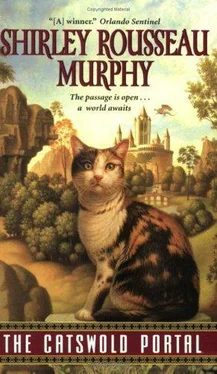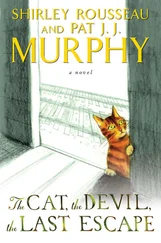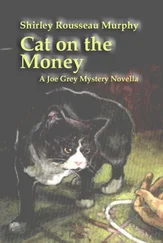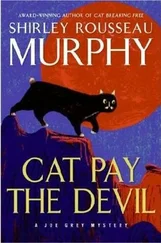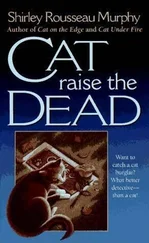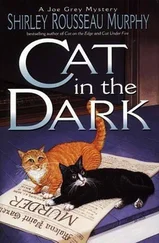Shirley Murphy - The Catswold Portal
Здесь есть возможность читать онлайн «Shirley Murphy - The Catswold Portal» весь текст электронной книги совершенно бесплатно (целиком полную версию без сокращений). В некоторых случаях можно слушать аудио, скачать через торрент в формате fb2 и присутствует краткое содержание. Год выпуска: 2005, ISBN: 2005, Издательство: HarperCollins, Жанр: Старинная литература, на английском языке. Описание произведения, (предисловие) а так же отзывы посетителей доступны на портале библиотеки ЛибКат.
- Название:The Catswold Portal
- Автор:
- Издательство:HarperCollins
- Жанр:
- Год:2005
- ISBN:9780060765408
- Рейтинг книги:4 / 5. Голосов: 1
-
Избранное:Добавить в избранное
- Отзывы:
-
Ваша оценка:
- 80
- 1
- 2
- 3
- 4
- 5
The Catswold Portal: краткое содержание, описание и аннотация
Предлагаем к чтению аннотацию, описание, краткое содержание или предисловие (зависит от того, что написал сам автор книги «The Catswold Portal»). Если вы не нашли необходимую информацию о книге — напишите в комментариях, мы постараемся отыскать её.
The Catswold Portal — читать онлайн бесплатно полную книгу (весь текст) целиком
Ниже представлен текст книги, разбитый по страницам. Система сохранения места последней прочитанной страницы, позволяет с удобством читать онлайн бесплатно книгу «The Catswold Portal», без необходимости каждый раз заново искать на чём Вы остановились. Поставьте закладку, и сможете в любой момент перейти на страницу, на которой закончили чтение.
Интервал:
Закладка:
The drawings were of the garden door.
The low oak door cut into the terraced hill like the door of an old-fashioned root cellar, though the small earthen room into which it opened had been built not for roots but to house gardening equipment: wheelbarrow, rake, ladder, pruning shears, sprinklers. The beautifully carved door was far too ornate to close a tool room, it belonged in medieval Europe closing away things exotic that rustled in the dark. It was made of thick, polished oak planks nearly black with age, rounded at the top beneath a thick, curved oak lintel, and carved in deep relief with cats’ faces.
Nine rows of cats’ heads protruded from the door, nine faces to a row. They were life-sized cats carved in such deep relief that two-thirds of each head thrust out of the wood. They were so real that one’s first impression was of live cats looking out—dark furred, handsome. The cats in the top three rows seemed to be smiling with some inscrutable feline glee. Those in the center rows looked secretive. The cats in the bottom three rows screamed open mouthed with rage, their ears laid flat, their eyes slitted, their little oak teeth sharp as daggers. Each cat was so alive that no matter how many times one saw the door, the effect was always startling. As if the cats thrust their heads through some aperture in time or dimension from another place.
And after Alice’s death, as he shuffled through her drawings looking at the individual cat faces, he felt his spine go cold for no reason. He had put the drawings away, filled with the unreasonable idea that the cats had caused her death. He had not, in succeeding months, been able to shake that thought.
He knew she had intended, on the day she died, to go to the Museum of History and try to trace the door’s origin. That was why she had the drawings with her. Maybe she’d gone there, maybe she hadn’t. Strangely, he hadn’t wanted to find out.
When Alice was small and her aunt owned the house that was now their studio—that had been their studio—Alice had believed the door of the cats was magic. Though she’d outgrown that idea, she had never outgrown her fascination with its medieval aspects and with the cats themselves.
In her early childhood photographs Alice was a thin little girl, very blond, wiry and lively. She had studied at Art Institute where her father taught; she was the only child among classes of adults. She had spent hours of her childhood in the city’s museums drawing skeletons, and at the zoo drawing the animals, while other children threw popcorn at the caged beasts. She had taught herself the intricacies of bone structure and of the movement of muscle over bone; she had learned how to bring alive the bright gleam of an eye, the sudden lifting of a paw. Some of her relatives, misunderstanding, had called her a prodigy. She had simply loved animals and wanted to paint them.
She was twenty when he met her; she was a student in the first classes he taught. He had found her dedication to animals too commercial, not painterly. He had told her that a true artist strove for the abstraction, for the heart of meaning, not just to reproduce an image. She told him she was striving for the heart of meaning, and that he was blindly misguided if he didn’t see it. She told him he was too out of touch, too idealistic. That someone who had spent four years fighting in the Pacific should see more clearly than he did. He said being a Marine had nothing to do with what he saw as a painter. He had told her that if she wanted to be a commercial artist—and he had used the term like a four-letter word—she should go across the bay to the more commercial school, and not waste her time at Art Institute.
She had been the only student at Art Institute to be making good money long before she graduated. She had established a name for herself while most of the students were still trying to find out what they wanted to do. And as he worked with her in class, he began to see that her work was not simply realistic, that it had a deep, involving power.
He still got calls two years after her death from people in other states who didn’t know Alice was dead, who wanted her to do a commission. Since the first of the year he’d talked with five thoroughbred breeders and more than a dozen hunting and show kennels. Her work had a richness and a quality of mystery that stole nothing from the strong aliveness of the animals she painted; as if she painted not only the animals, but aspects of their spirits as well.
He had given Alice’s childhood diary to her parents, though he would have liked to keep it. It contained many of her small, early drawings, mostly of the pets she had as a child. One cat in particular she had drawn many times. There was a pastel of the same cat in their favorite restaurant in the city, a small French cafe. He hadn’t been there since Alice died. The small, intimate cafe, whose walls were hung with the works of many Bay area artists, held too many painful memories of her.
In the map cabinet now were only the drawings of the garden door, and a few sketches of the child who had disappeared. He didn’t know why he had kept the drawings of the child, likely the kidnapped child had been killed though Alice had refused to believe that.
The little girl had vanished from the garden when she and Alice were visiting Alice’s aunt here, the child had been playing alone by the tool shed. Alice had searched frantically, gone to all the neighbors and into the village, and after several hours to the police, beginning the search that lasted long after Aunt Carrie died, that lasted until Alice was killed.
When he and Alice started dating, she had been so preoccupied over the child’s disappearance that she seemed, often, hardly to see him. She would be white, shaken with the things she thought might have happened to the little girl.
The wind rose, soughing through the garden and through the tops of the redwoods that thrust black against the night sky. Above the trees against the stars, pale clouds blew. He rose and went into the dark studio and did not switch on the lights.
His new paintings covered the walls, in the darkness they were only black squares. They oppressed him, he did not want to look at them, he felt constricted by them and by his commitment to finish the series.
The date for his show at Chapman’s was too close and he wasn’t ready, the work wasn’t ready. His lack of passion for the work, and his lack of professionalism in letting himself go like this, had no excuse. He told himself he’d lost the desire and thus the skill, that he wouldn’t paint anything worthwhile again. He knew that was stupid. He wasn’t some twenty-year-old who didn’t know how to handle hard times. But he couldn’t shake the depression, and the work reflected his barrenness—stilted and dry.
He turned away from the paintings restlessly and went back outside. Without conscious thought he crossed the brick veranda and headed up the dark garden toward the door of the cats.
The carved oak door was lit faintly by the scattered house lights at the outer boundaries of the garden. In the wind under the blowing trees the cats’ faces seemed to move and change expression. They chilled him. As he stood looking, annoyed with himself for coming up here, he began to imagine space beyond the door. Unending hollowness. Deep spaces yawning down inside the hill. He imagined he could hear echoing sounds above the wind and voices whispering from deep beyond the door. And then he shook his head, and turned away, and went back to the terrace for a drink.
Chapter 2
Perhaps the universe tilted for an instant to allow Braden his perception of the dark, cavernous spaces. Surely some change in the natural forces permitted him to glimpse the tunnel plunging down, the teetering slabs of stone thrusting down into the hollow bowels of the earth. Though he didn’t, for a moment, believe in such things. It was the next morning that, deep within the earth, an old woman stood saddling her horse.
Читать дальшеИнтервал:
Закладка:
Похожие книги на «The Catswold Portal»
Представляем Вашему вниманию похожие книги на «The Catswold Portal» списком для выбора. Мы отобрали схожую по названию и смыслу литературу в надежде предоставить читателям больше вариантов отыскать новые, интересные, ещё непрочитанные произведения.
Обсуждение, отзывы о книге «The Catswold Portal» и просто собственные мнения читателей. Оставьте ваши комментарии, напишите, что Вы думаете о произведении, его смысле или главных героях. Укажите что конкретно понравилось, а что нет, и почему Вы так считаете.
